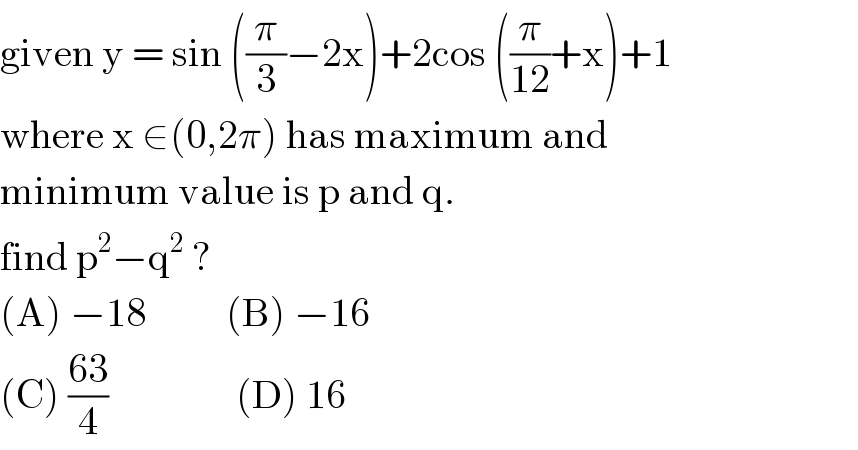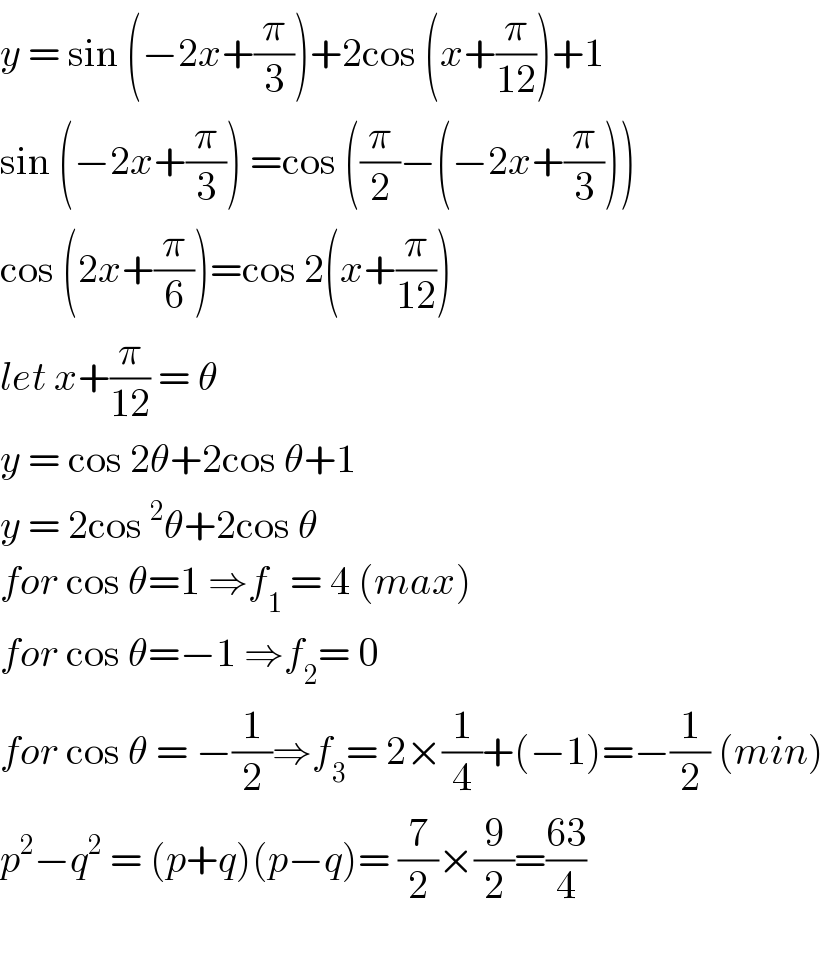
Question and Answers Forum
Question Number 81354 by jagoll last updated on 12/Feb/20

Commented by john santu last updated on 12/Feb/20

Commented by jagoll last updated on 12/Feb/20

| ||
Question and Answers Forum | ||
Question Number 81354 by jagoll last updated on 12/Feb/20 | ||
 | ||
Commented by john santu last updated on 12/Feb/20 | ||
 | ||
Commented by jagoll last updated on 12/Feb/20 | ||
 | ||